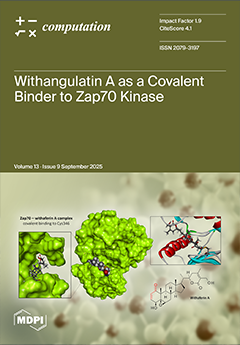Practical applications such as solar power energy systems, electronic cooling, and the convective drying of vented enclosures require continuous developments to enhance fluid and heat flow. Numerous studies have investigated the enhancement of heat transfer in L-formed vented cavities by inserting heat-generating components, filling the cavity with nanofluids, providing an inner rotating cylinder and a phase-change packed system, etc. Contemporary work has examined the thermal performance of L-shaped porous vented enclosures, which can be augmented by using metal foam, using nanofluids as a saturated fluid, and increasing the wall surface area by corrugating the cavity’s heating wall. These features are not discussed in published articles, and their exploration can be considered a novelty point in this work. In this study, a vented cavity was occupied by a copper metal foam with
and saturated with a copper–water nanofluid. The cavity walls were well insulated except for the left wall, which was kept at a hot isothermal temperature and was either non-corrugated or corrugated with rectangular waves. The Darcy–Brinkman–Forchheimer model and local thermal non-equilibrium models were adopted in momentum and energy-governing equations and solved numerically by utilizing commercial software. The influences of various effective parameters, including the Reynolds number (
), the nanoparticle volume fraction (
), the inflow and outflow vent aspect ratios (
), the rectangular wave corrugation number (
and
), and the corrugation dimension ratio (
and
) were determined. The results indicate that the flow field and heat transfer were affected mainly by variations in
,
, and
for a non-corrugated left wall; they were additionally influenced by
and
when the wall was corrugated. The fluid- and solid-phase temperatures of the metal foam increased with an increase in
and
. The fluid-phase Nusselt number near the hot left sidewall increased with an increase in
by
, while the solid-phase Nusselt number decreased by
, and these numbers rose by around
times when the Reynolds number increased from
to
. For the corrugated hot wall, the Nusselt numbers of the two metal foam phases increased with an increase in
and decreased with an increase in
,
, or
by
,
, and
. The original aspect of this study is its use of a thermal, non-equilibrium, nanofluid-saturated metal foam in a corrugated L-shaped vented cavity. We aimed to investigate the thermal performance of this system in order to reinforce the viability of applying this material in thermal engineering systems.
Full article





